MXA RACE TEST: 2017 YAMAHA YZ250: HEADED TO DIVORCE COURT
Click on images to enlarge
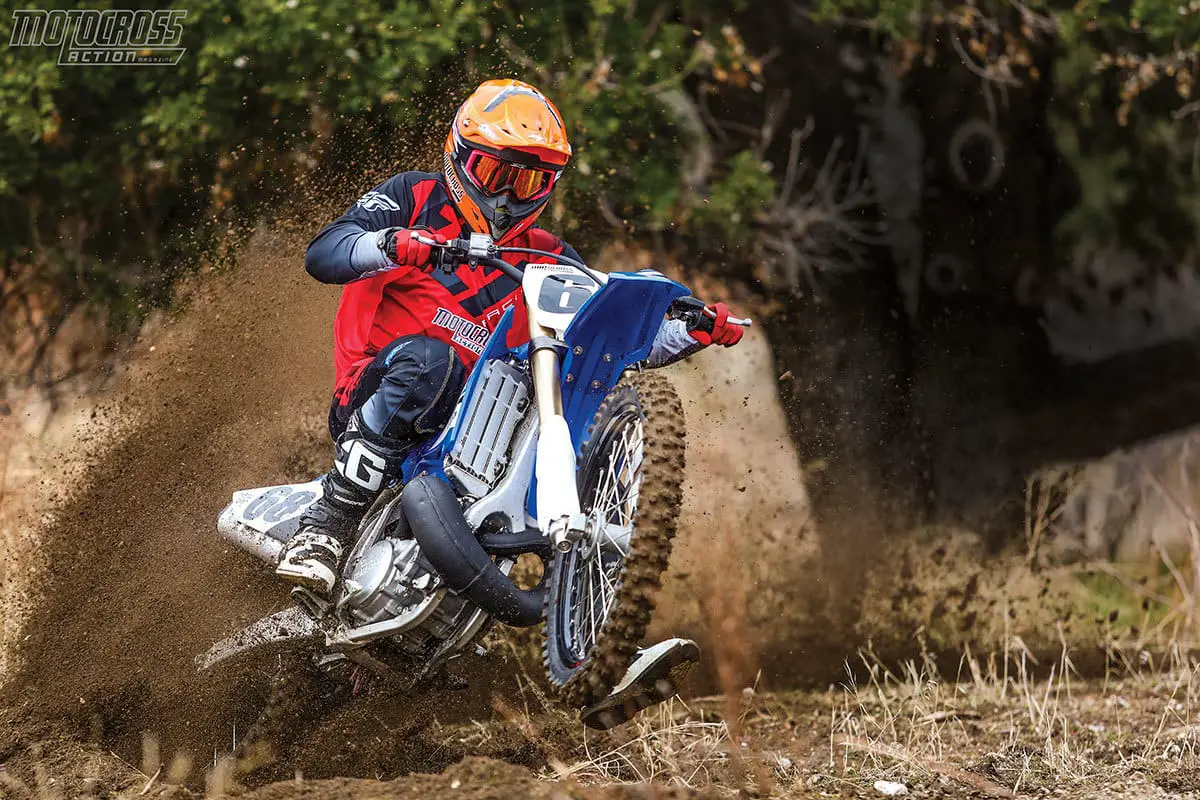
Instead of asking the same old question, “What changes have been made to the 2017 Yamaha YZ250?” We are going to ask, “What changes need to be made to the 2018 Yamaha YZ250,” because otherwise we will be running the exact same test every year in MXA for as long as the top brass continue to pop out more Xerox copies of the same-old YZ250. This is especially true of the 2017 Yamaha YZ250, which is identical to the 2016 YZ250—save for Bold New Graphics (BNG) and bigger front rotor. At least Yamaha changed the graphics. Honda didn’t even give the 2017 Honda CRF250 a courtesy sticker. So kudos to Yamaha for the BNG, but customers aren’t going to be thrilled to pay $109 more for updated radiator decals.
In 2016 MXA built lots of Yamaha YZ250 project bikes based on older-model YZ250s. We rebuilt the engines, updated the suspension and even made them look like the current showroom YZ250s. How is it possible that everything on a 2017 YZ250 can still bolt on to an 11-year-old YZ250—save for the front fender? Even more shocking, when test riders rode the new model and the old model back to back, they couldn’t tell which one was new and which one was celebrating its 10th birthday. Most of the time they preferred the older model because of its re-valved suspension and aftermarket pipe.
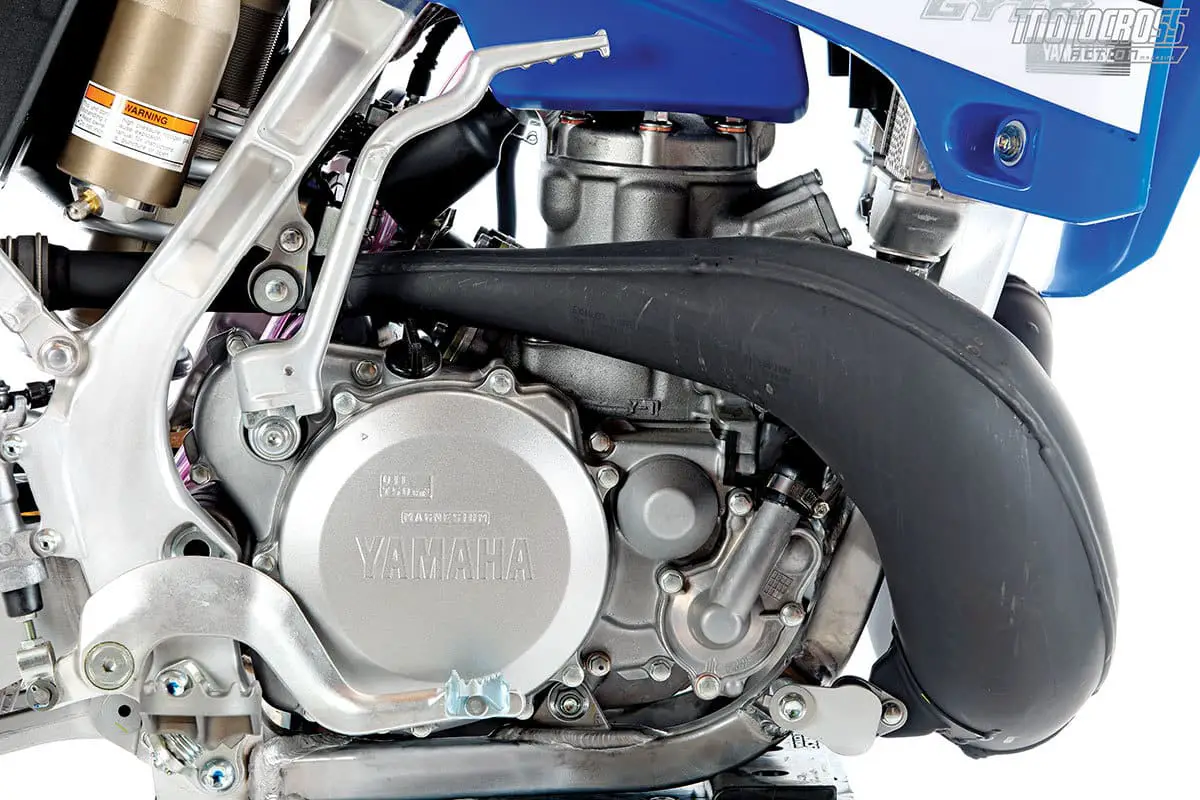
Yamaha’s marketing strategy with the YZ250 two-stroke is a recipe for disaster. Why? Because any year Yamaha YZ250—from 2006 to 2017—is the victim of benign neglect. That is testimony to just how good the Yamaha YZ250s of 2006 on up were, but it begs the question, why would a consumer pay $7399 for a 2017 YZ250 when he can buy a used 10-year-old YZ250 that has the same chassis, suspension and engine for half the price? And have the exat same bike—give or take a few doo-dads.
MXA likes to say that the best-selling motocross bike of all time is the Yamaha YZ250 two-stroke, or, more accurately, that used YZ250s are the best-selling bikes because they have been sold and resold over and over again. It is hard to believe that Yamaha’s product managers are unaware of the success that KTM has had with its two-stroke line. The Austrian brand, with the added production quantities from sister brand Husqvarna, sells more two-strokes than Yamaha sells four-strokes. KTM has never slowed its two-stroke R&D. If you put a 2006 KTM 250SX next to a 2017 KTM 250SX, you’d think that the old one was a vintage bike. Not so with the Yamaha YZ250. Look where the money that KTM invested in its two-stroke product line has brought the KTM brand.

Okay, maybe we are being too hard on Yamaha. After all, Yamaha didn’t turn tail and run when the four-stroke craze wiped out two-stroke sales overnight. They kept producing two-strokes when Honda, Suzuki and Kawasaki threw in the towel. But, they weren’t true believers. They just produced enough two-strokes to supply dealer demand, and, of course, dealer demand decreases every time the latest Xeroxed Yamaha YZ250 is released. We don’t know what’s going on behind closed doors at Yamaha’s factory. Maybe they have wonderful things planned for the future, but that obviously didn’t include the 2017 Yamaha YZ250.
Is there a fix for the doldrums that the YZ250 has fallen into? Heck yes. All Yamaha has to do is copy KTM’s business model. KTM doesn’t hide the fact that its 250cc and 300cc two-stroke engines are the best-selling powerplants in its vast fleet of bikes. KTM exalts the two-stroke, while Yamaha seems to be running on autopilot. Want a fuel-injected two-stroke? KTM has one, Yamah doesn’t. KTM has proven that there is a big piece of pie up for grabs—and we know that Honda, Suzuki and Kawasaki won’t bite into it.

Believe us, MXA doesn’t like bashing the YZ250. We love this bike. It has been loyal to us. It has been steady, predictable and reliable. We have shared a lot of quality time together. However, if the trend of the last 10 years continues, we are headed for divorce court. We can’t grow old together without change.
Change is what motocross development is all about. Look at where the four-stroke was 10 years ago in terms of weight, power, reliability and handling. Now look at where it is today. Now imagine that the 2017 Yamaha YZ250 was the benefactor of the same slavish devotion to research and development as the Yamaha four-strokes. To that end, here are several things that Yamaha should consider doing to the 2018 YZ250. Here’s a list—that we are sure that any loyal two-stroke guy could add to in a second.
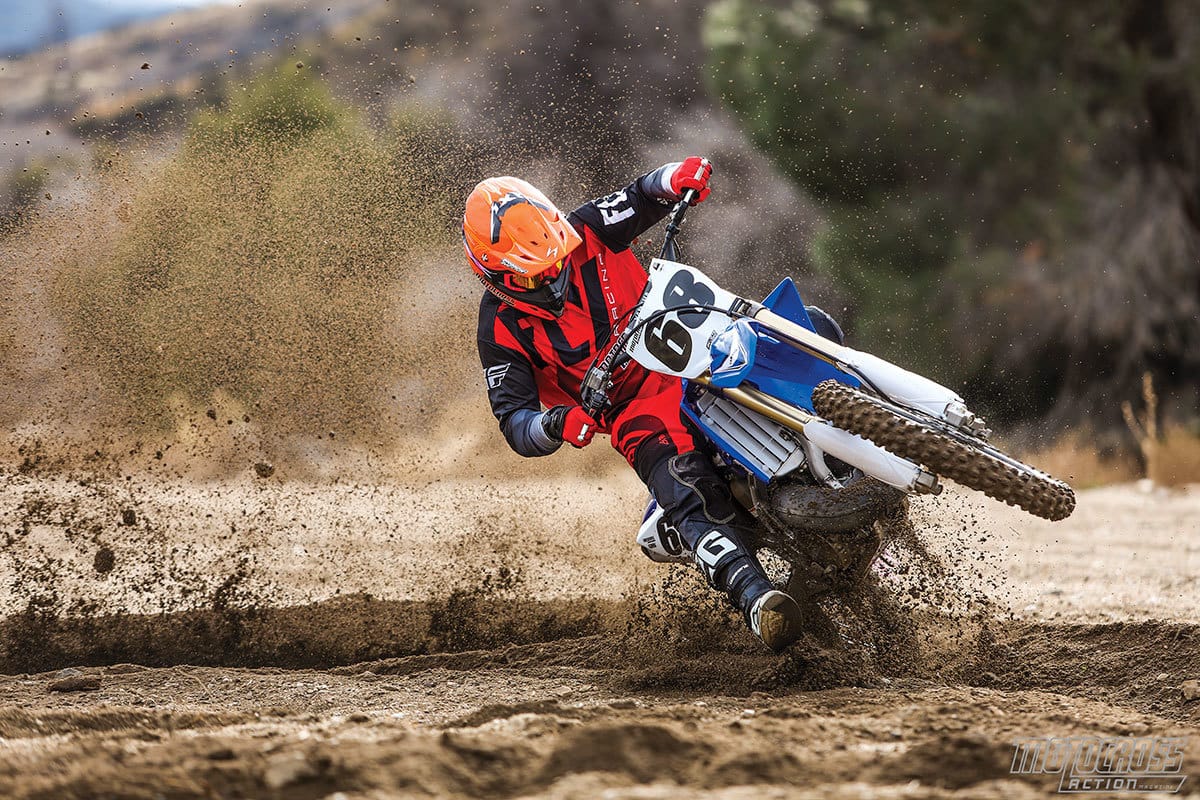
(1) MAKE THE POWERPLANT COMPETITIVE WITHOUT BREAKING THE BANK
At 47.10 horsepower and 30.6 foot-pounds of torque, the Yamaha doesn’t have horrible numbers for an engine that has remained stagnant for more than a decade. It has a broad, fun-to-ride powerband that suits any occasion. Whether it’s on a motocross track, plonking through the woods or play riding in the hills, the YZ250 engine has a do-it-all powerband that gets the job done. On the other hand, it is hard to ignore the potent powerplant of its competition. The 2017 KTM 250SX comes in at 47.21 horsepower (with 32.81 foot-pounds of torque). On paper, it doesn’t look like a significant difference. But, the KTM puts out five more horses than the YZ250 from 6000 to 7500 rpm. We won’t lie; it is a wild ride. It hits hard in the midrange and rocks you back in the saddle. It is a race engine, but one with vibration-reducing counterbalancers, a compact size and faultless hydraulic clutch. And, you can even get an electric starter for it.
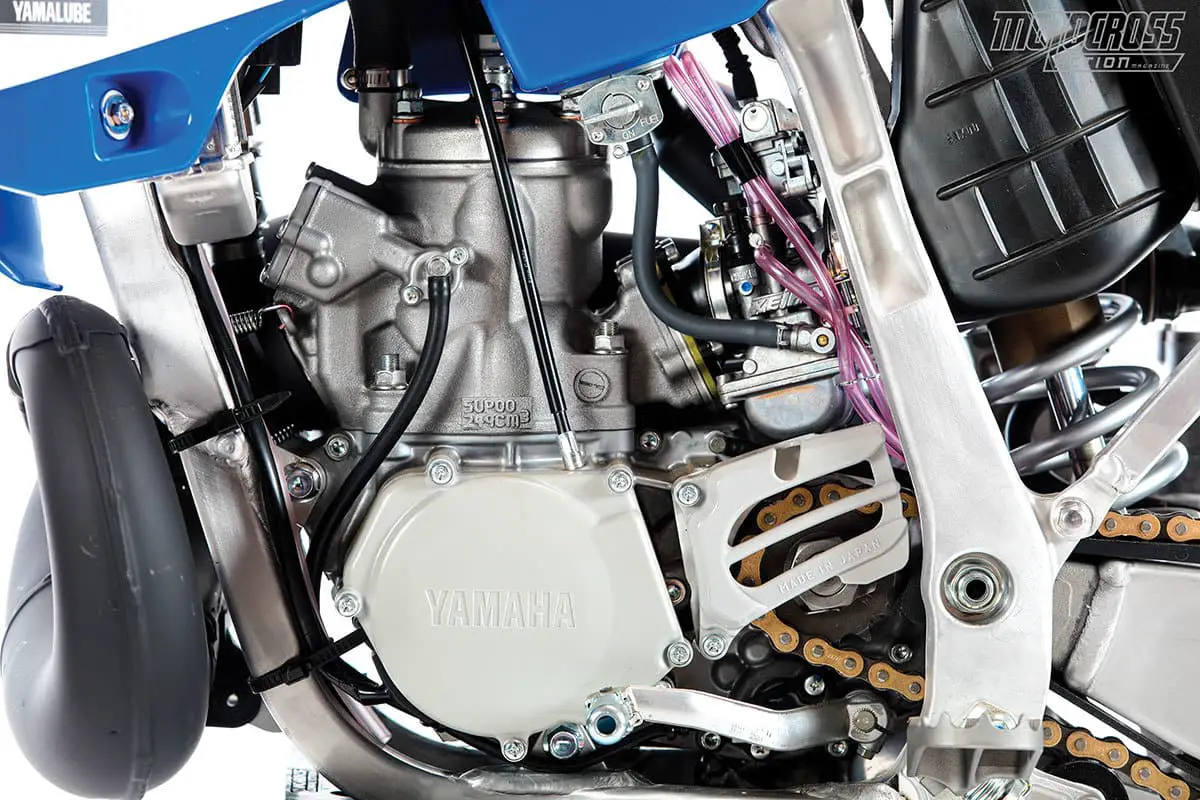
It wouldn’t take much for the YZ250 powerplant to be competitive against the KTM 250SX. Hear us out. Yamaha could keep the basic bones of the existing engine and simply add a copy of a Pro Circuit pipe and silencer. Right off the bat, Yamaha would gain 2 solid horsepower and over 1 foot-pound of torque. Next, Yamaha could make a deal, as KTM did a few years ago, to run an aftermarket reed cage. The payoff would be improved throttle response and midrange. What about getting the power to the ground? A heavier flywheel weight is the proof in the pudding. All the Yamaha factory YZ250 riders back in the day ran one. But, we don’t even need to go that far, because the KTM 250SX needs one as well.
If these few minor, low-cost changes can make a YZ250 stronger, faster and more competitive, think what Yamaha could achieve with a totally new engine.
(2) DON’T WASTE TIME WITH FUEL INJECTION
Fuel injection is always the go-to Mr. Fix-It of everything that ails the motorcycle world, but Yamaha needs to forget it, except in the enduro world where the strict Euro-4 emission standards are what KTM act on their almost decade old EFI two-stroke. There is no guarantee that a fuel-injected two-stroke engine will have the charm, simplicity, raw horsepower or fuel-on-demand usability of a carbureted two-stroke. But, we can guarantee that it will raise the price, weight and complexity of a two-stroke engine and make it harder for the backyard mechanic to work on.
It is the ease of maintenance that has kept the Yamaha YZ250 around all these years. Any guy with a nutcracker and a bottle opener can change the top end on a YZ250 for a couple hundred dollars in parts. Let’s not lose that in pursuit of some technical nirvana.
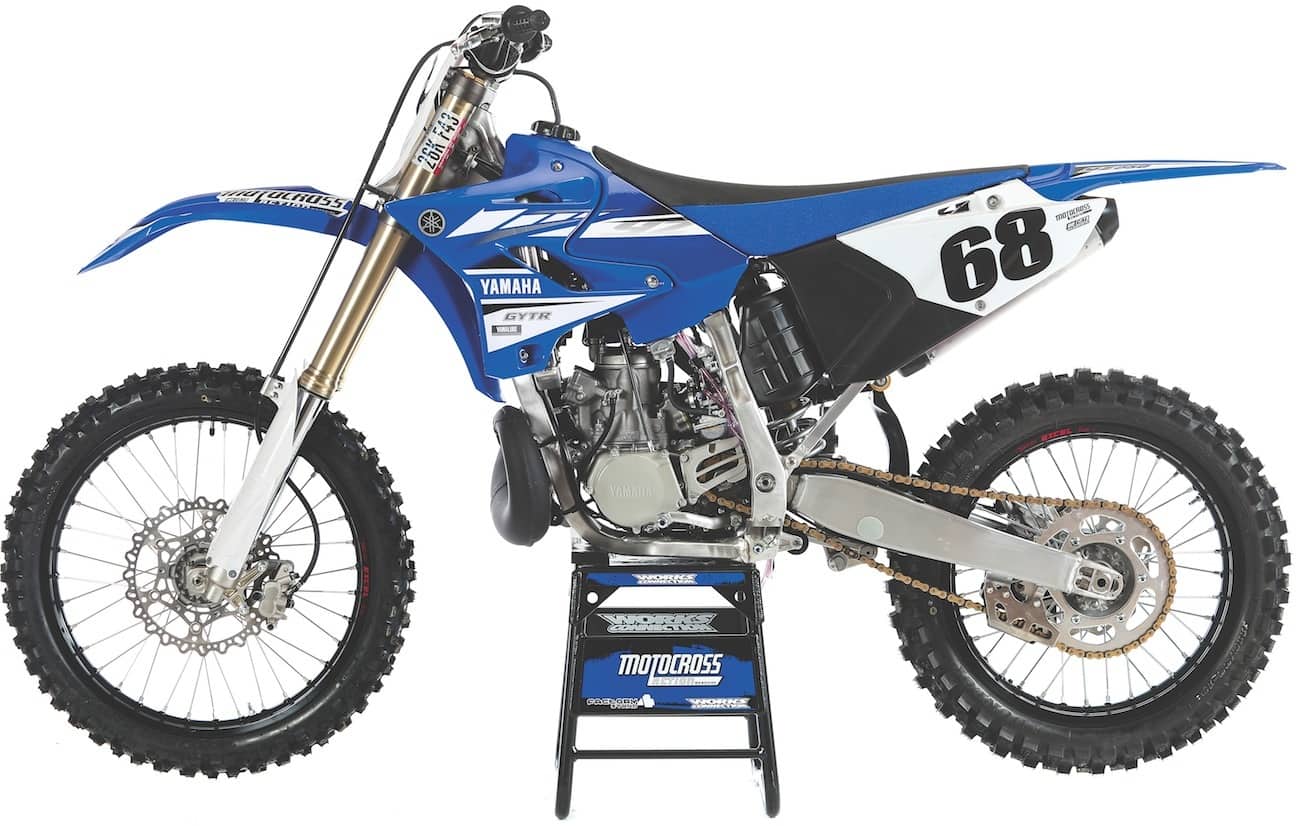
(3) BUILD A CHASSIS WITH THE HANDLING CAPABILITIES OF THE LATEST KTM
This is where Yamaha is going to have real trouble. We can turn a blind eye to the engine, because we can fix it ourselves with some aftermarket parts. But, we can’t fix handling with Band-Aids. For its time, back when the Bushes were in the White House, the YZ250 chassis was as good as it got as an all-around-handling package. But, in the long, dry, fallow years since this chassis was designed, it has been overshadowed by its lone competitor. The YZ250 has always been a middle-of-the-road-handling machine. It doesn’t do anything wrong, but it doesn’t do anything especially right, either. Even back in the day, the now-defunct Suzuki RM250 could turn better and the Honda CR250 had better ergonomics. Now, in 2017, it has met a more formidable foe in a KTM 250SX that does everything right.
And not to hurt the feelings of the Yamaha engineers any more than necessary, but the 2017 KTM 250SX weighs 211 pounds. That is 7 pounds lighter than the Yamaha YZ250, which was once considered to be a lightweight (back when 450 four-strokes weighed 242 pounds). Now the YZ250 weighs the same as a KTM 250SXF—the four-stroke version.
Yamaha’s first step would be to work on some frame dimensions that enhance steering response on the entrance to turns and deliver a lighter, more agile feel. Perhaps Yamaha could borrow a page from the Service Honda CR500AF and start stuffing YZ250 engines into 2013 Yamaha YZ250F frames to get a taste of whether they have something already in the inventory that could work. They’d have to go back to the 2013 frame, because the newer-model Yamaha four-strokes have reverse engines.
No matter what its chassis strategy, Yamaha needs to step up to the plate in the handling department.
(4) STICK WITH KAYABA SSS SUSPENSION COMPONENTS
Don’t change a thing with the suspension. It won’t be long before every motorcycle manufacturer will reevaluate its flawed commitment to air forks, save for KTM, who has found the magic elixir with the AER air fork design. Honda has already backed away from PSF-2, and we expect that the 2018 model year will be flush with coil spring forks. When it comes to suspension, this is where Yamaha’s benign neglect looks like an Einstein moment of clarity.
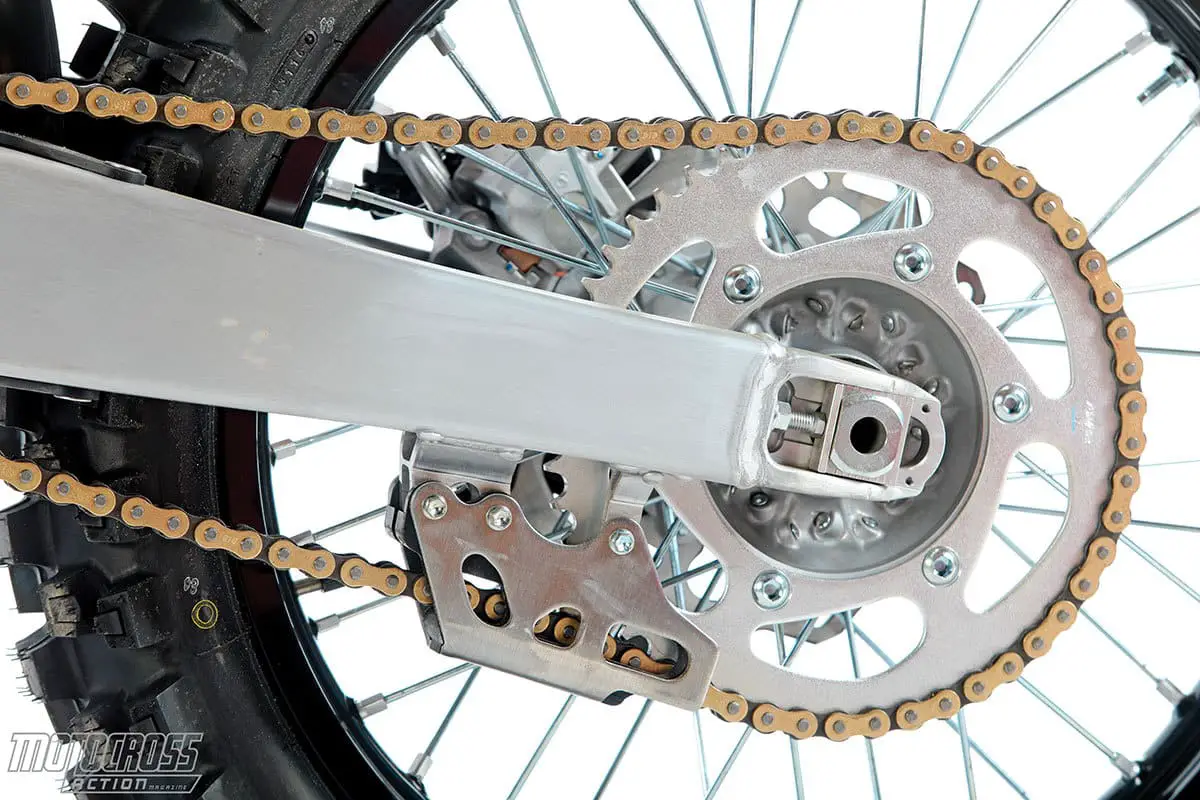
(5) WORK ON THE PUCKER POWER
You can only go as fast as you can stop. Every motocross racer knows that old adage, but, when it comes to brakes, the Japanese brands are way behind the curve compared to KTM’s Brembo combination. After letting Brembo get miles ahead, the “Big Four” threw oversized 270mm rotors on their bikes to try to close the gap. The big rotors offered more stopping power, but they lacked modulation and were grabby compared to the 260mm Austrian stoppers. Big rotors aren’t the cure-all of iffy brakes. Yamaha, Honda, Kawasaki and eventually Suzuki need new master cylinders, better calipers and improved hydraulics to work in unison with the big rotors.
(6) THE CHEAPEST WAY TO IMPROVE THE YZ250’S HANDLING
When a bike falls out of favor with product managers, the first sign that it is persona non grata at the factory is the tires that come stock on it. The YZ250 is spec’ed with Dunlop MX52 tires. These are the Dunlop models that virtually every brand dropped in 2017 in favor of a Dunlop MX3S or Bridgestone 403/404 combo. The difference in handling performance between a mediocre tire like the MX52 and a premier tire is measured in light years in the motocross world. Plus, Yamaha already specs the Bridgestone 403/404s on its 2017 YZ250F and Dunlop MX3S’ on the YZ450F. Why not put good tires on a bike that need good tires more than it needs cheap rubber.
(7) AN HONEST EVALUATION OF THE 2017 YAMAHA YZ250
It is obvious that the engineers who built the Yamaha YZ250 were visionary thinkers. It has stood the test of time for almost a decade—and was even winning 250 two-stroke shootouts until a few years ago (largely because of KTM’s pitiful forks). But, Father Time (and KTM’s AER forks) have caught up with it. The YZ250 is still a great bike for the backyard builder to buy on the used-bike market, but on the new-bike market, it has been eclipsed by what KTM and Husqvarna are offering.
The MXA wrecking crew applauds Yamaha for being the last Japanese manufacturer to build a two-stroke line, but we don’t want Yamaha to become the next Japanese manufacturer to drop its two-stroke line. It’s time for Yamaha to show the YZ250 the same amount of love that its loyal devotees do.
MXA’S 2017 YAMAHA YZ250 SETUP SPECS
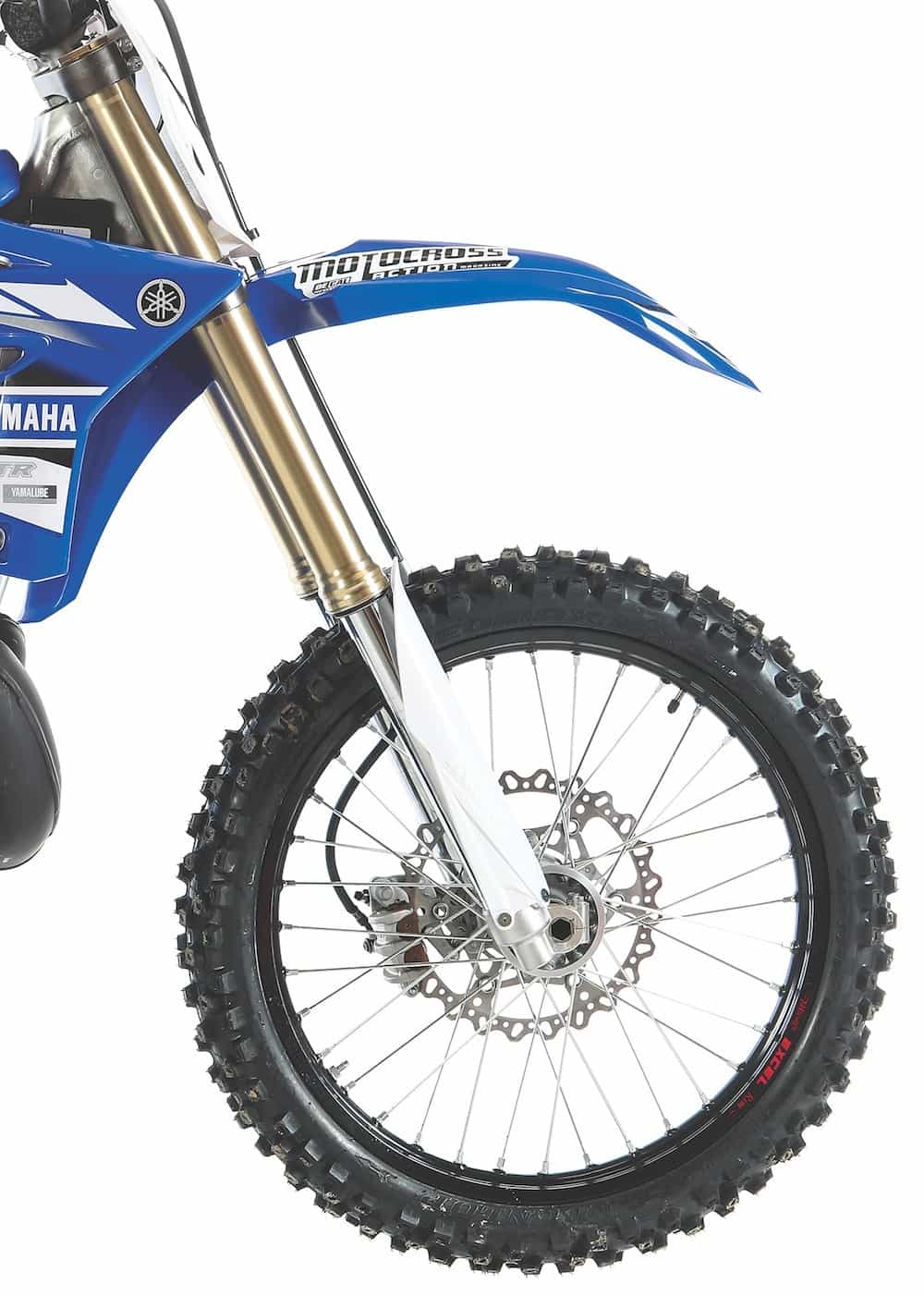 This is how we set up our 2017 Yamaha YZ250 for racing. We offer it as a guide to help you find your own sweet spot.
This is how we set up our 2017 Yamaha YZ250 for racing. We offer it as a guide to help you find your own sweet spot.
KAYABA SSS FORK SETTINGS
Th eonly 11 year-old part on the Yamaha YZ250 that has stood the test of time is the suspension. The Kayaba SSS forks are things of beauty. For hardcore racing, we ran this setup on the 2017 Yamaha YZ250 (stock clickers are in parentheses):
Spring rate: 0.43 kg/mm
Oil height: 330cc
Compression: 13 clicks out
Rebound: 14 clicks out
Fork-leg height: 10mm up (5mm up)
Notes: These are awesome forks, made all the more terrific by the light feel and snappy input of the two-stroke engine. Obviously, if you are fast or fat, you might want to go stiffer on the fork springs. Typically, however, fast riders can dial in more compression and use the crossover effect of rebound damping to get the stock fork springs to work.
KAYABA SSS SHOCK SETTINGS
For hardcore racing, we ran this setup on the 2017 Yamaha YZ250 (stock clickers are in parentheses):Spring rate: 4.7 kg/mm
Race sag: 100mm (105mm)
Hi-compression: 1-3/4 turns out (1-1/2 turns out)
Lo-compression: 8 clicks out (13 clicks out)
Rebound: 8 clicks out (12 clicks out)
Notes: The YZ250 shock comes with a jumbo-sized 18mm shock shaft, Kashima-coated internals and SSS damping. AMA National-speed riders and heavyweight contenders will need to move up to a 5.0 kg/mm spring.
YAMAHA YZ250 JETTING
Jetting is not much of an issue on a bike that has been unchanged for so long. Every hardcore YZ250 racers has his own magic set-up and the stock YZ250 brass is good to go for the stock combination. Here are MXA’s recommended jetting specs (when changed, stock specs are in parentheses):
Main: 178
Pilot: 50
Needle: N3EW
Clip: 2nd from top
Air screw: 1 turn
Notes: The 2017 YZ250 jetting is on the edge, albeit the good side of the edge. If you hop-up the YZ250 or add an aftermarket exhaust pipe, you will need to go to a bigger 180 or 182 main. Other than that, the YZ250 jetting is basic, simple and effective. The air screw is very sensitive from 1/2 turn to 1 turn out.


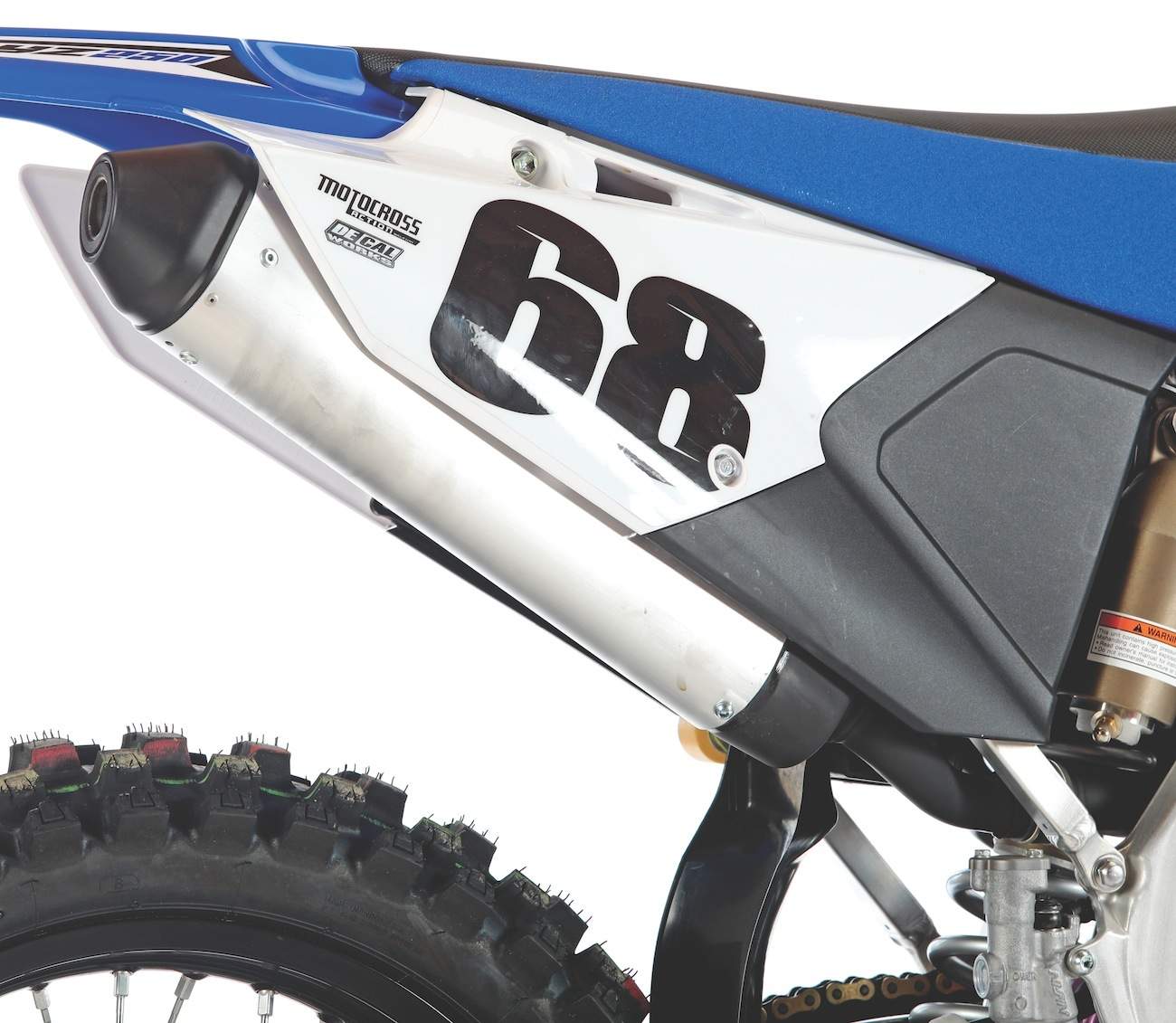

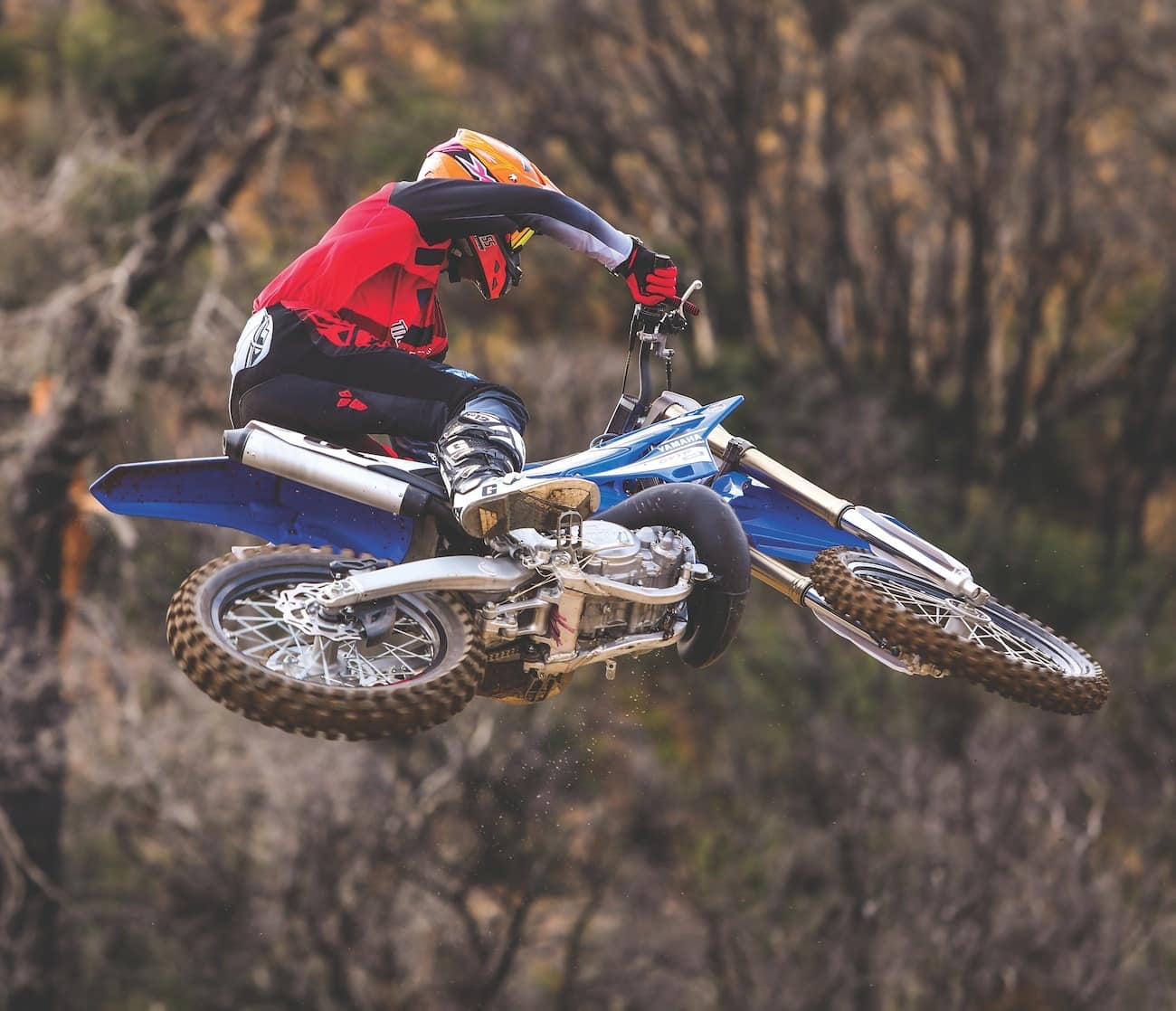
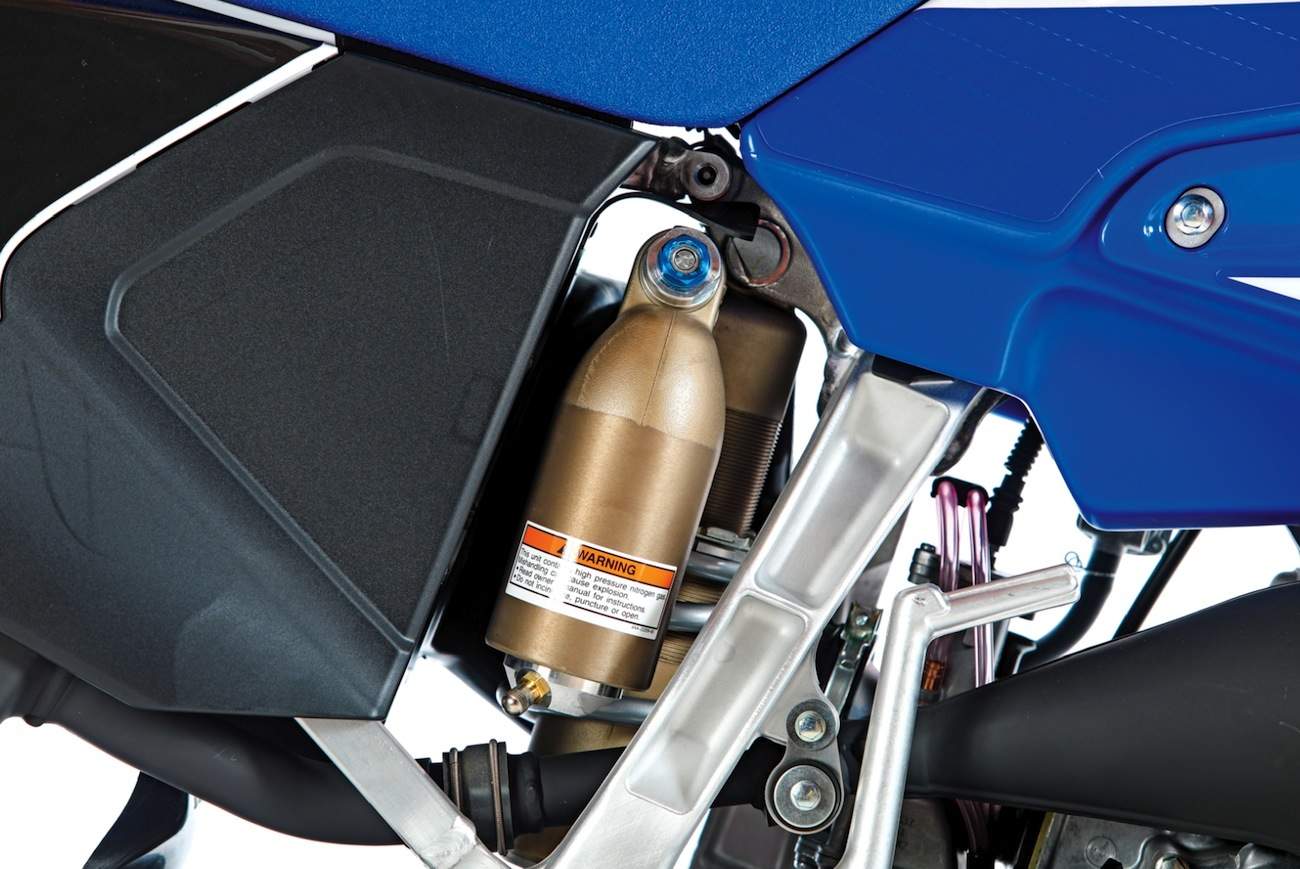




Comments are closed.